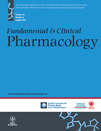Effect of vitamin D3 supplementation on the pharmacokinetics of digoxin – a pilot study
Abstract
Emerging evidence from preclinical, clinical and epidemiological studies suggests that vitamin D3 plays vital roles in several diseases in addition to bone disorders. According to new medical evidence, it is being recommended that vitamin D3 intake to be increased for maximal benefits in human health. However, it is necessary to consider potential side effects of increased intake of vitamin D3. Vitamin D3 exerts its actions through the vitamin D receptor, which is known to be an important regulator of P-glycoprotein (P-gp). As P-gp plays a significant role in limiting drug bioavailability, we undertook a study to compare single-dose digoxin (a P-gp substrate) pharmacokinetics in eight healthy male subjects before and after vitamin D3 supplementation (1000 IU per day). The geometric mean ratios for AUC0–3h, AUC0–48h and Cmax were 1.06 (90% CI 0.92, 1.21) and 1.02 (90% CI 0.97, 1.08) and 1.03 (95% CI 0.86, 1.24), respectively. The median for digoxin Tmax was 0.75 h before and after vitamin D3 ingestion. The mean plasma 25-hydroxyvitamin D3 (25(OH)D3) levels remained constant after the intake of vitamin D3 (15.4 ± 3.7 and 14.4 ± 3.6 ng/mL, respectively), while there was a modest but statistically significant increase in plasma calcium levels, from 9.32–9.68 mg/dL (P = 0.0277). These results suggest that vitamin D3 supplementation (1000 IU per day) in human volunteers does not produce a P-gp-mediated drug interaction with orally administered digoxin.




